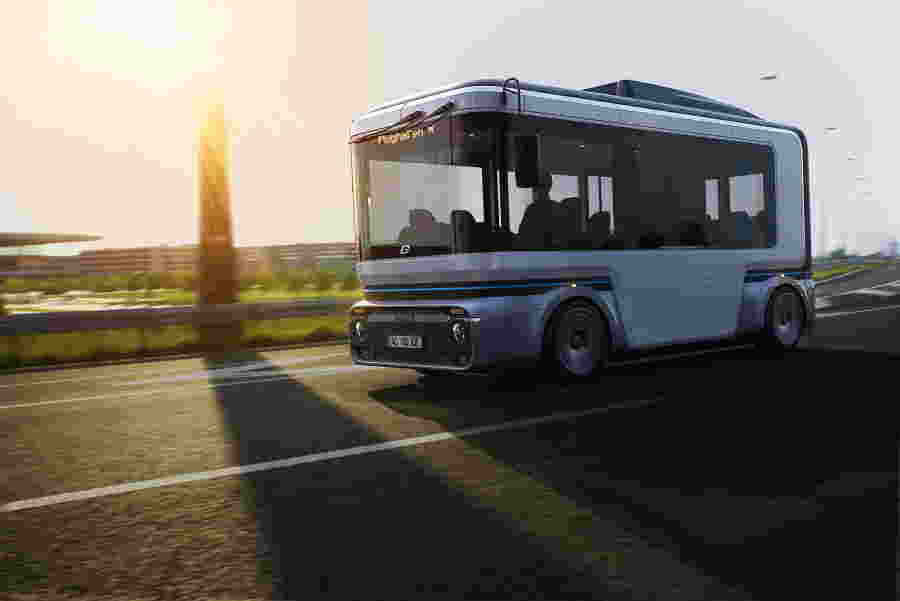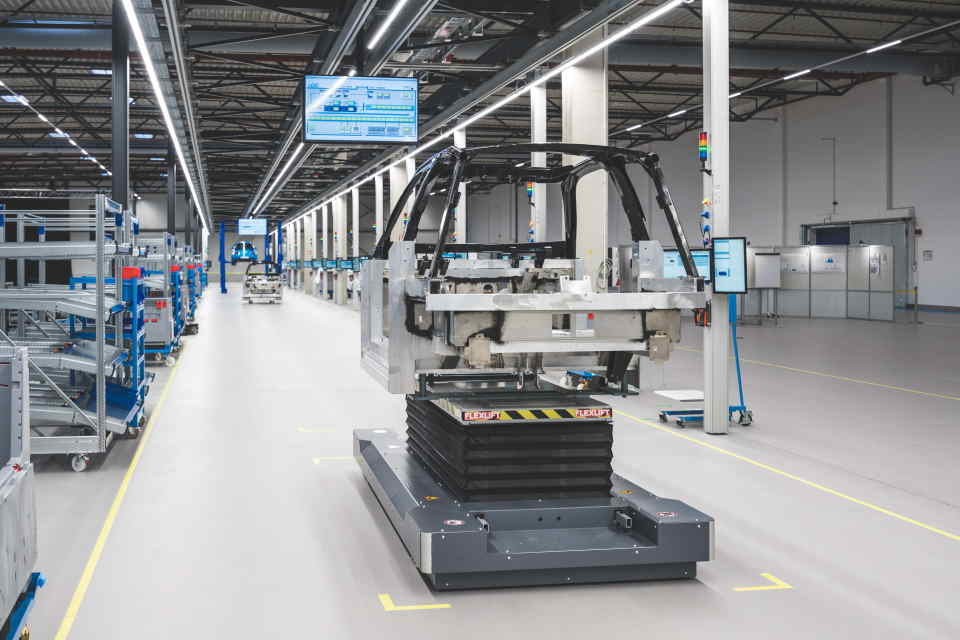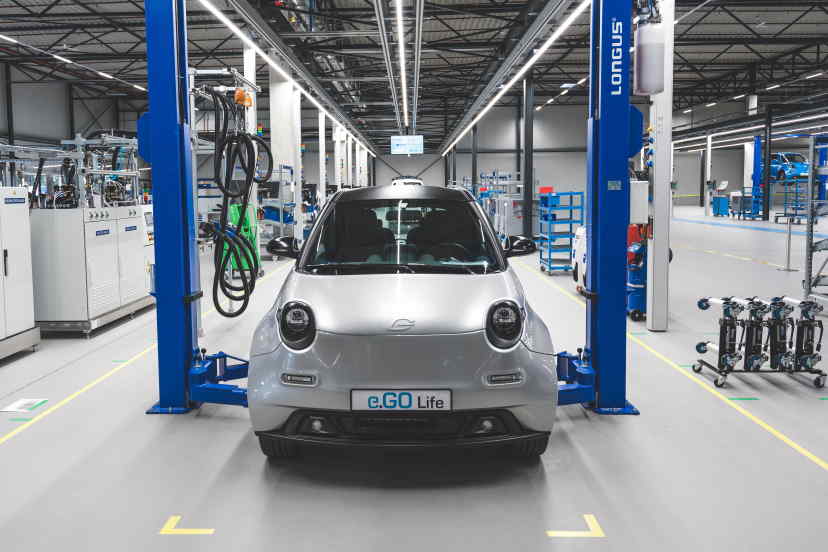"Electromobility for everyone"
The aim of the young Aachen-based company e.GO Mobile AG is to make electromobility affordable. A highly motivated team around the professor and entrepreneur Günther Schuh from Aachen has set its mind on achieving what large German automotive manufacturers and contenders such as Tesla have failed to do so far: Holistic electric mobility concepts for the average earner. One main focus of this strategy lies in the production and in innovative development concepts. And wherever there is so much esprit, a Fraunhofer alumnus is sure to be not far away. We talked to Dr. Nils Klingbeil, formerly from the Fraunhofer Institute for Production Technology IPT, about his new activity in Expert Research at e.GO Mobile AG and congratulate Mr. Klingbeil on his successful promotion!
Mr. Klingbeil, electric vehicles play almost no role at all on Germany's roads. How did you become involved in electric cars?
It more or less arose from my personal motivation: Since my childhood, vehicles have always been on my mind. I am sure that anyone who knows me would agree when I say that going to an automotive manufacturer was a logical step for me. e.GO came up at just the right time, and the philosophy suits me well: The focus must always be on the customer. The automotive industry is far too involved in competition and no longer sets the customer in focus. What is the point of squeezing out the last micrometer in the gap dimensions at an enormous expense in development and production costs, if this leads to additional costs for the consumer? Basically, all the consumer wants is a good and safe car. So we need to concentrate on production technology. And at e.GO Mobile AG, the aim is to actually do things differently.
What is so special about it?
For one, we are not approaching our target of affordable electromobility from the design side. And secondly, we are not developing a vehicle to then build it in series. As production specialists, we turn it around and look at it from the other side. We are looking at how to produce a vehicle as cost-effectively as possible. While the spaceframe, among some other things, is built by us, we purchase most of the other components. An Italian designer is responsible for the appearance of the vehicles.
At the moment, Tesla is setting the trends in electromobility. The small start-up company e.GO from Aachen, however, is introducing affordable electric cars to the market. Have the big German automotive manufacturers missed out on this trend?
That is a question that everyone must answer for themselves. Like everybody else, I'm not sure if we all missed out on something. Let us take the Tesla Model S, for example. This American manufacturer boosted electromobility - no doubt. However, you need to take a second look: So far, only top earners can afford these and similar vehicles. What's more, these cars may be really fast, but they are not particularly efficient. Nevertheless, they do have a relatively high range.
For me, answering your question first and foremost means defining the goals we wants to achieve: We want a city car that is not too fast and does not necessarily have to have a range of 500 kilometers. For example, we are positioning our e.GO Life as a typical second car. This also enables us to create an affordable electric car.
With e.GO we have simply taken a different direction. Effectively there have been numerous developments in electric drives from the large German carmakers. However, they have also taken a more cautious approach to the issue. What we did could have been done by any of these manufacturers. But they obviously did not want to. I am convinced that with our vehicle and our approach, we will significantly advance the topic of electromobility.
What do you do differently from the traditional automotive manufacturers?
We, for instance, do without pressing plants, as they are extremely expensive. Instead, we rely on an aluminium spaceframe for the vehicle. And we also do not have catalytic dip-painting, which is required in conventional vehicle engineering, in our production. This enabled us to build our first plant with a comparatively small investment. And we can therefore pass this price advantage on to the consumer.
In short, traditional production lines cost much more! But doesn't that consequentially also entail restrictions?
We currently have plants 1 and 2, and will soon be building a third one for the e.GO Mover. The Mover is a new concept design. It is roughly the size of a microbus and can transport up to 15 people.
We are Germany's youngest OEM, so we are real manufacturer, not just a bespoke carmaker. But in comparison to other manufacturers, we only build in small series. We have a cycle time of 10 minutes and intend to produce 10,000 of our small electric vehicles – the e.GO Life – within 12 months in single-shift operation.
Basically, we are going for the Low Capex approach. In plant 1, where the Life is assembled, the degree of automation is low and the employees assemble the car at 29 stations. In plant 2, we build the spaceframe in robot-supported, automated operation. The entire production is digitized and complies with Industry 4.0. This gives us the agility to quickly change over to other derivates. At the same time, it also enables us to give the customers a high level of individualism at an affordable price.




